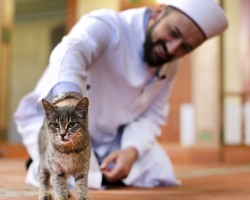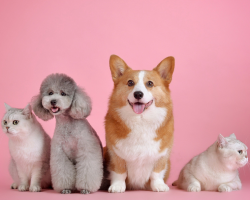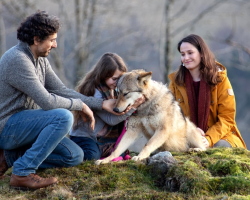Differences in castration and dog sterilization. Animal care after sterilization.
Content
- What is the difference between castration and dog sterilization?
- Sterilization of dogs, for and against
- Dog sterilization methods
- Dog behavior after sterilization
- Dog care after sterilization
- What complications can arise after sterilization of the dog?
- Castration of dogs, for and against
- Dog care after castration
- Consequences after the castration of the dog
- Video: dog castration
Many owners of cats and dogs, only having bought an animal, plan castration or sterilization. Such animals are called a “pillow”, since a quadruple friend does not start with the aim of obtaining offspring and profit, but for beauty.
What is the difference between castration and dog sterilization?
- Most unprecedented people think that only male individual, that is, male can be castrated. But it is not so
- You can also sterilize and castrate a female. The difference is the difference in the methods of conducting the operation. With castration in the animal, the genitals are completely or partially removed
- The female cut the uterus with the ovaries. Only the ovaries used to be removed, but due to an increase in the number of cases of tumors on the uterus, it also began to be removed
- During castration, males cut out two testicles. Animals are completely changing. Behavior becomes less aggressive, since there is no surge of hormones
- When sterilized in females, the fallopian tubes are tied up, and the males have seed cords. At the same time, the animal behaves, as does the non -sterilized individual
- The hormonal background of the animal does not change. It can ask to mate and even do this with a individual of the opposite sex, but there will be no offspring after mating

Sterilization of dogs, for and against
When sterilized, the sexual system of a four -headed friend remains untouched. Many owners consider this the norm and think that they take care of the pet.
But this does not eliminate sex drive, respectively, the dog (male) will jump on toys, the legs of people, making friction movements. The male can mark the territory and behave aggressively.
After sterilization of the female, Tychka does not go anywhere, the animal rubs about everything, blood is released. The behavior of the animal can become unbearable. The female can mate with the male, but without obtaining offspring.
Advantages of sterilization:
- The sexual system of the animal will remain untouched
- Hormonal background does not change
- Animal behavior is like before the procedure
- Care for a pet simple after intervention, and restoration is faster than after castration
Sterilization disadvantages:
- Aggression during a period of mating
- The possibility of damage to furniture during this period
- The ability to get ovarian or uterus cancer in females and eggs of eggs in male
Dog sterilization methods
There are several ways to sterilize dogs:
- Cable method. This is a full -fledged surgical operation during which the surgeon with a scalpel makes an incision and bandages the fallopian tubes and seed cords. Large rehabilitation after surgery is long due to the size and soreness of the seams
- Endoscopy. Simply put, this is laparoscopy. In the process of the procedure, probes are introduced through the procedure through three microscopic cuts into the abdominal cavity of the animal. Gas is supplied through one tube, which expands the peritoneum and makes an organs overview better. The second probe is carried out, and the third tube is a camera. Nothing needs to be sewn after the operation, since the wounds are very small. The dog is restored for only a few days
- Chemical or radioputodes. During chemical sterilization, a huge number of hormones are introduced, which for some time make the impossibility of conception. After a while, you will have to repeat the procedure. Very often, after hormonal injections or irradiation of the animal, cancer, peiometer, endometritis are observed
Dog behavior after sterilization
If this is sterilization with the bandage of pipes or seed gaps, then the behavior of the animal does not change in any way, since the hormonal background is unchanging.
The dog wants to mate, aggression may occur. Males are prone to dominance.
Dog care after sterilization
There are several rules that need to be followed after sterilization:
- You can not feed the dog without harm to three days. If the animal does not want to eat, do not force. Let's drink water
- The seams can not be processed when using special threads. A doctor will tell you about this
- Be sure to cover the dog while it comes out of anesthesia. No need to apply a heating pad
- You need to walk with the dog, but exclude jumps and outdoor games so that the seams do not part
- Do not feed the dog for the first week with dry food. Only soups and canned food should be in the diet
- Until the animal has come out of anesthesia, use absorbent diapers, the dog can describe
- With severe pain, give an animal antispasmodic
What complications can arise after sterilization of the dog?
Despite the simplicity of the operation, complications are possible:
- Discovery of seams
- Pulmonary edema
- Internally bleeding
- Hernia
- Inflammation of the seams
- Heart disorders
Castration of dogs, for and against
- The operation is more complicated than sterilization, since the genitals of the animal are removed. But has a number of advantages than sterilization:
- The behavior of a four -haired friend changes for the better, the female does not flow, and the male does not mark the territory
- Aggression and desire to tear everything disappears
- The dog has no sex drive
But many animal owners consider such an operation inhumane and dangerous. Of course, the recovery period is long, but why torture the animal if you do not want to grow offspring?
At what age do you need to castrate a dog?
- For small breeds, it is best to carry out castration at seven months. Giant breeds need to be castrated in 1-1.5 years
- It is better to monitor the behavior of the animal, with changes and the appearance of sexual attraction, it is worth carrying out the procedure. At the indicated age, the animal’s sexual system has formed, but there is no desire to mark the corners, there is no aggression in behavior. This is the best operation for surgery
- You can castrate after 7 years of life, but the health of a mature animal is not the best. The seams heal longer, complications are possible. Early sterilization is not welcome. The animal is quickly restored, but problems with the development of the reproductive system are possible
Dog care after castration
- Care is not much different after sterilization and castration. The risk of a pulse fall or breathing stop high. It is necessary to constantly listen to the breath of the pet and feel the pulse
- Be sure to use absorbent diapers until the friend wakes up. Cover the animal with a blanket. Recommendations for the care of the seams will give a surgeon
- When pain appears, give an antispasmodic or anesthetic. Be sure to feed the pet with diet food, do not allow you to run on a walk. At this time, you can walk with a dog using a leash
Do not allow the animal to lick the wounds. Put on the jumpsuit or panties. You can wear a special cap -shaped collar.
Consequences after the castration of the dog
Basically, negative consequences arise due to non-compliance with the rules for leaving the owner or violations during the operation itself.
Possible consequences of castration:
- Rotting and divergence of seams
- Infection with improper care or in the process of intervention
- Urinary incontinence
- Hernia
- Abscess and peritonitis
The following consequences are not dangerous:
- Vomiting 1-2 times after anesthesia
- Urinary incontinence before the exit of anesthesia
- Slight decrease or fever
- Frequent breathing
- Anxiety

Despite the trauma of castration and sterilization, more and more owners seek to perform surgery to their pets. This makes life easier for the dog and the owner.
















Castrated her dog - a dachshund of a male of 4 years .., I think that the hormonal background has changed all the same (very quickly gained excess weight! ((Was the kindest dog) introvert, sometimes slightly cowardly, is friends with cats and rabbits)) Now it has become aggressive in relation to to homeless males ((it doesn’t climb into a fight but barking like a rottweiler) and that it’s interesting even large in size dogs immediately run away .. and how he loved his tired rag))) so the attraction to her did not disappear!) I don’t know if correctly if correctly I acted that she castled him .., now struggling with overweight (((I wanted him to live longer, but from excess weight, also dogs have a lot of diseases (((